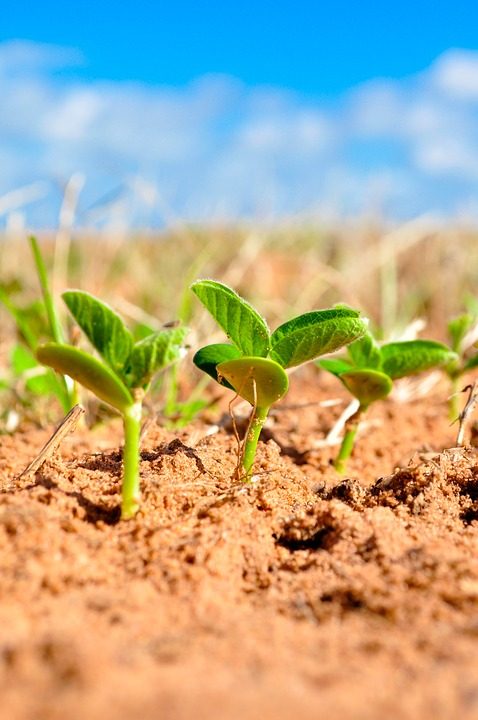
Nathan Glenn, Agriculture Agent Associate | nglenn@umd.edu
University of Maryland Extension, Howard County
Cool, wet conditions and early-season pest or disease pressure across Maryland may have resulted in thin or uneven soybean stands, prompting farmers to ask: Should I replant? The answer hinges on one key question:
Will the expected gross return of a replanted stand be greater than the gross return of the existing thin or uneven stand?
A replant decision isn’t just agronomic—it’s economic. Later planting dates usually mean lower yield potential, and replanting incurs additional costs. Making a data-driven decision requires careful scouting, accurate calculations, and a clear understanding of potential return on investment. Here’s what you can do:
Step 1: Identify the Cause of the Poor Stand
Before replanting, determine why the original stand failed. Cold soil temps, soil crusting, slug damage, herbicide injury, seedling disease, and insect damage are common culprits. Without addressing the root cause, a replant may suffer the same fate. Consider seed treatments, adjusting planting depth, or changing varieties if necessary. I have seen slug damage in every soybean field I have been in so far this year, but it seems like they might outgrow it, especially with this warm, dry weather forecasted in central Maryland over the next 10 days. Sometimes all you need is better weather!
Step 2: Conduct Accurate Stand Counts
Two common methods can help determine how many plants per acre you currently have:
- Traditional Row Length Method:
- Count the number of plants in a length of row that equals 1/1,000th of an acre.
- Example: In 30-inch rows, count plants in 17 feet, 5 inches.
- Multiply the count by 1,000 to get plants/acre.
- Hula Hoop Method:
- Toss a hoop (typically 30-inch diameter) randomly in the field.
- Count the number of plants inside the hoop.
- Multiply by a conversion factor (8,900 for 30-inch hoop) to estimate plants/acre.
Step 3: Estimate Yield Potential of the Current Stand
Use your plant population and uniformity to estimate yield potential:
|
Yield potential of a soybean field with reduced stands at 7.5 inch and 30 inch row spacings |
||
|
Population |
Drilled (7.5 inch rows) |
Planter (30 inch rows) |
|
160,000 |
100 |
100 |
|
120,000 |
100 |
100 |
|
80,000 |
96 |
100 |
|
60,000 |
92 |
94 |
|
40,000 |
87 |
88 |
|
20,000 |
77 |
81 |
|
10,000 |
58 |
72 |
Adapted from Table 1.6-3, The Agronomy Guide, Penn State Extension
|
Yield potential of full-season soybeans due to uneven deficient stands (i.e. gaps) |
|||
|
Percent stand lost to gaps |
140,000 plants/acre |
105,000 plants/acre |
70,000 plants/acre |
|
0 |
100 |
97 |
95 |
|
10 |
98 |
96 |
93 |
|
20 |
96 |
93 |
91 |
|
30 |
93 |
90 |
88 |
|
40 |
89 |
86 |
83 |
|
50 |
84 |
81 |
78 |
|
60 |
78 |
75 |
73 |
Adapted from Table 1.6-4, The Agronomy Guide, Penn State Extension
Step 4: Estimate Yield Potential of a Replanted Stand
Later planting reduces yield potential even in ideal conditions. Use the table below:
|
Approximate yield reduction of soybeans due to delayed planting date |
|
|
Date |
Percent of full yield potential |
|
10-May |
100 |
|
20-May |
98 |
|
30-May |
95 |
|
10-Jun |
88 |
|
20-Jun |
76 |
|
30-Jun* |
70 |
|
10-Jul* |
60 |
This table quantifies the estimated yield penalty as planting date is delayed. Adapted from Table 1.6-5, The Agronomy Guide, Penn State Extension. * Relevant only in areas where double cropping is practiced.
Step 5: Estimate the Costs of Each Option
Costs of Keeping the reduced stand:
- Reduced herbicide efficacy due to open canopy
- Increased weed competition
- Yield reduction
Costs of replanting:
- Seed: $60–$80/acre
- Fuel and labor: $10–$15/acre
- Machinery wear: $5–$10/acre
- Additional herbicide or pesticide: varies
- Total estimated replant cost: $75–$120/acre
Step 6: Use a Soybean Replant Decision Worksheet
Here’s how the math works, step by step:
Example Scenario:
- Current stand: 70,000 plants/acre, 20% gaps, 30 inch rows
- Expected market price: $10.50/bu
- Expected yield of a full stand: 60 bu/acre
Current Stand:
- 91% of normal yield (70,000 plants w/20% gaps)
- 60 bu/ac × 0.91 = 54.6 bu/ac
- Added costs = $0
- Gross return = 54.6 bu × $10.50 = $573.30/ac
Replant Option:
- Planted June 10 → 88% yield potential
- 60 bu × 0.88 = 52.8 bu/ac
- Gross return = 52.8 bu × $10.50 = $554.40/ac
- Added costs = $100/ac
- Gross return = $554.40 – $100 = $454.40/ac
Conclusion: Do not replant—your current stand is more profitable by $118 per acre
Final Thoughts
Soybean replant decisions should always be based on data, not emotion. Accurately assess plant population, uniformity, yield potential, and costs. Many reduced stands still yield competitively, especially when gaps are minimal and plants are healthy.
For help making the best decision for your farm, contact your local Extension office or agronomist.
